Nanex Research

Nanex ~ 03-Jun-2013 ~ Great Timing
On June 3, 1013, trading in SPY exploded at 09:59:59.985, which is 15 milliseconds before the
ISM's Manufacturing number released at 10:00:00. Activity in
the eMini (traded
in Chicago), exploded at 09:59:59.992, which is 8 milliseconds before the news release,
but 7 milliseconds after SPY.
Note how SPY and the eMini traded within a millisecond for the
Consumer Confidence release last week, but the eMini lagged
SPY by about 7 milliseconds for the ISM Manufacturing release. The simultaneous trading
on Consumer Confidence is because that number is released at the same time in both NYC
and Chicago.
The ISM Manufacturing number is probably released on a low latency feed in NYC, and
then takes 5-7 milliseconds, due to the speed of light, to reach Chicago. Either the
clock used to release the ISM number was 15 milliseconds fast, or someone (correctly)
jumped the gun.
Update: 05-Jun-2013
CNBC reported on this story. The clock used to release the ISM was indeed, 15 milliseconds fast. This could
be from using the default setting of many NTP clients, which allows the clock to
drift up to about 16 milliseconds before adjusting time. Late in 2011,
we found that the clock in the UQDF feed was allowed to drift by about 16 milliseconds
before it was corrected: you can see that report
here with charts (the issue appears to have been corrected).
1. SPY trades color coded by exchange and NBBO. Chart shows 150 milliseconds
of time.
Note that trades shown as blue diamonds appear to lag behind trades from other exchanges.
Something we have reported on
several times
in the past.
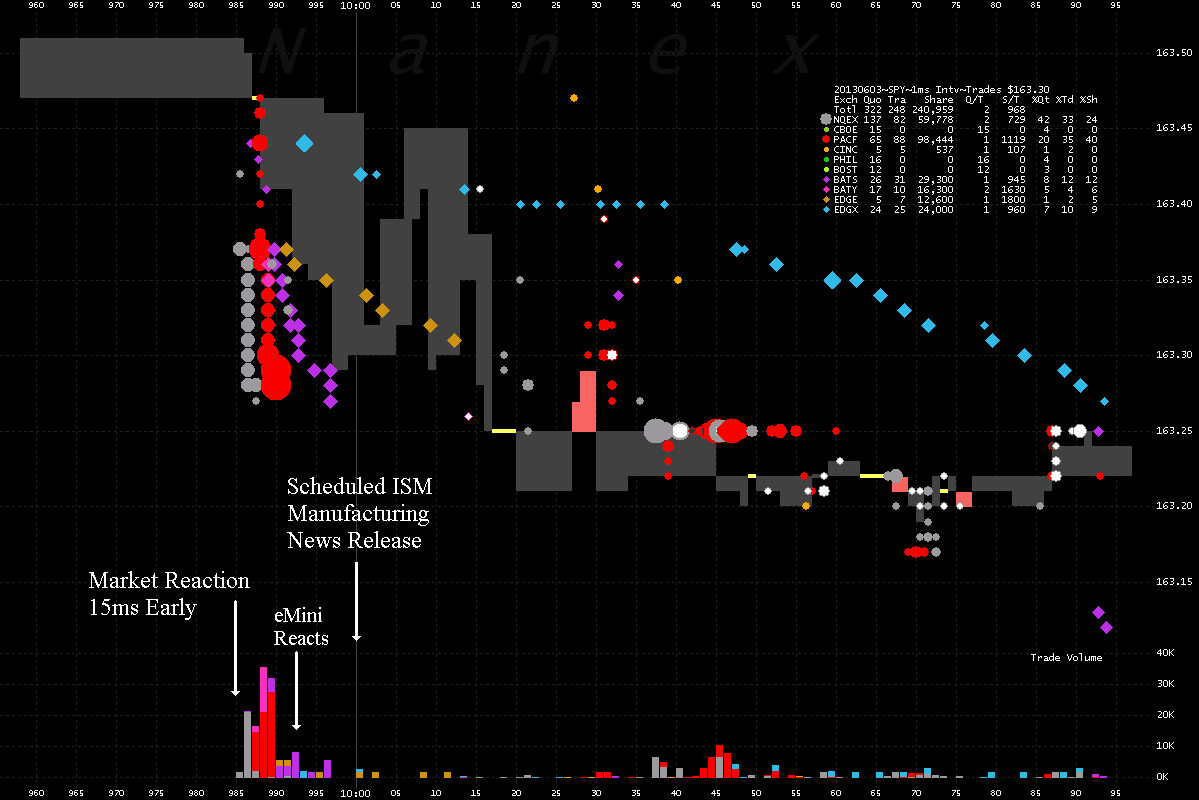
2. ES June 2013 Futures (eMini) trades and quote spread. Chart shows 150 milliseconds
of time.
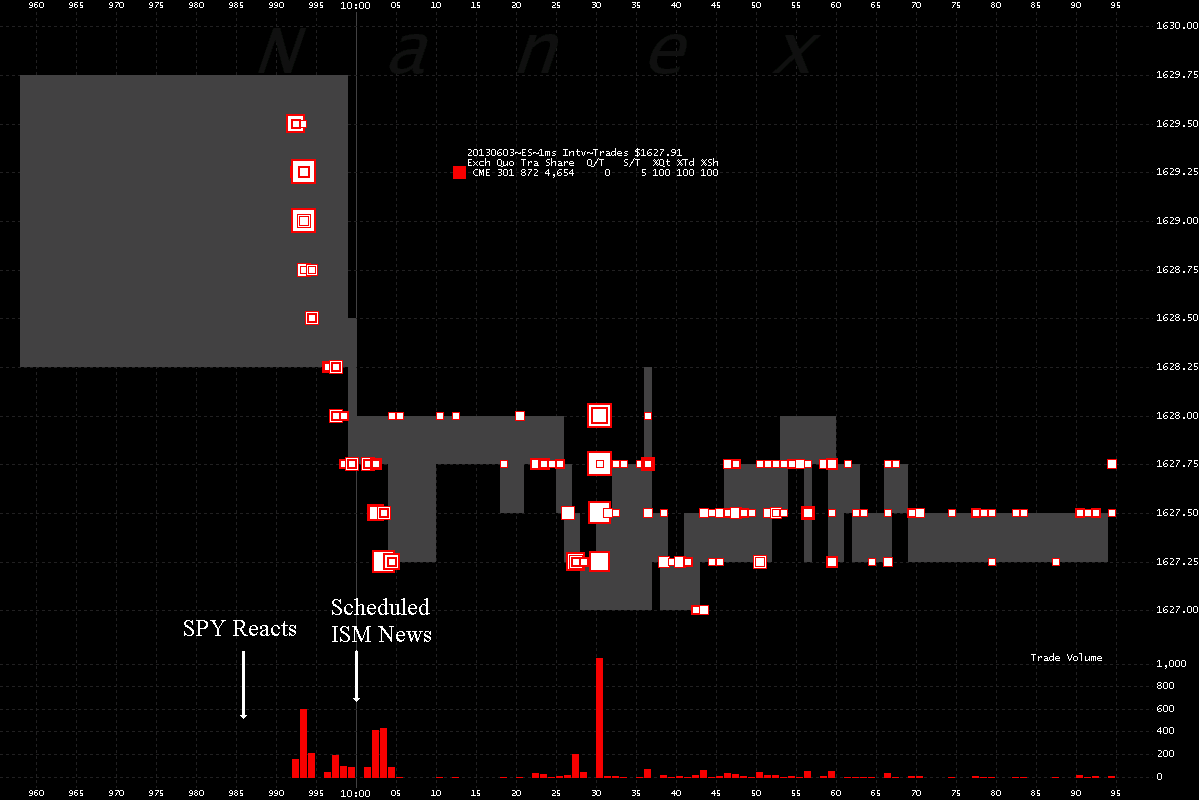
3. SPY trades color coded by exchange and NBBO. Zoom-out of Chart 1. Chart shows
1 second of time.
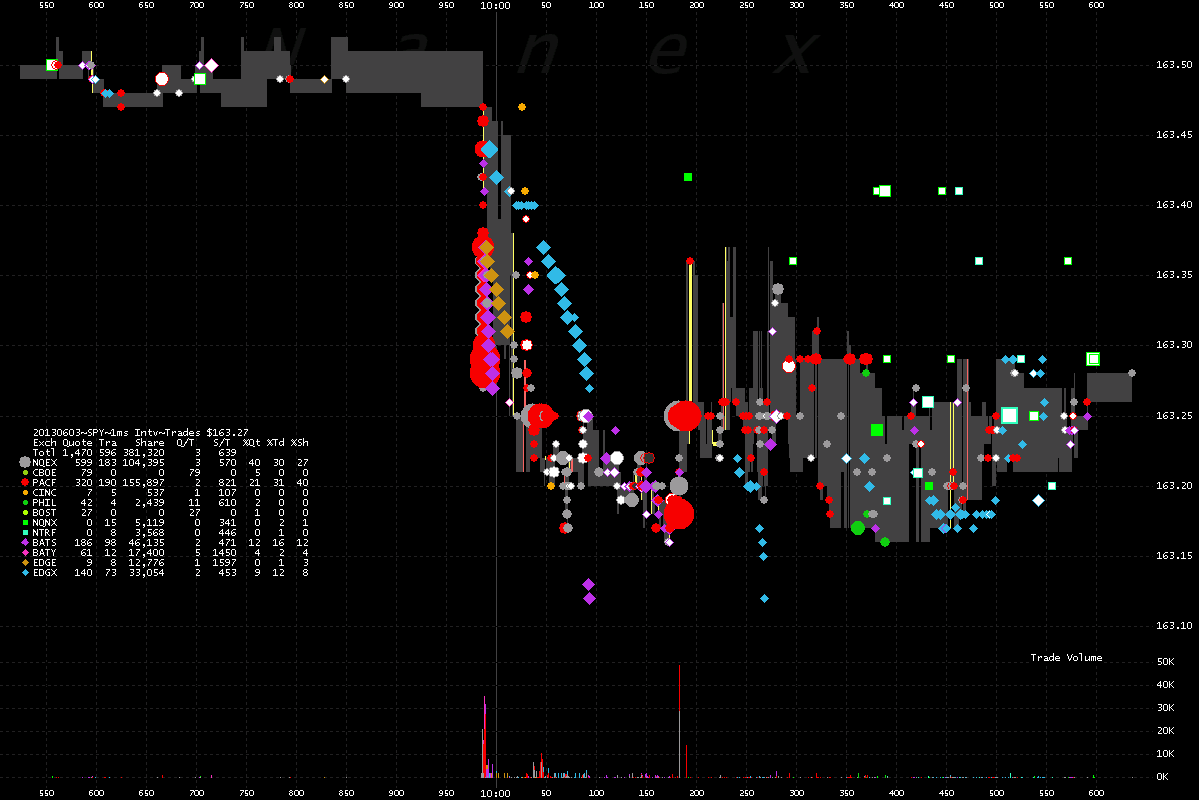
4. ES June 2013 Futures (eMini) trades and quote spread. Zoom-out of Chart 2.
Chart shows 1 second of time.
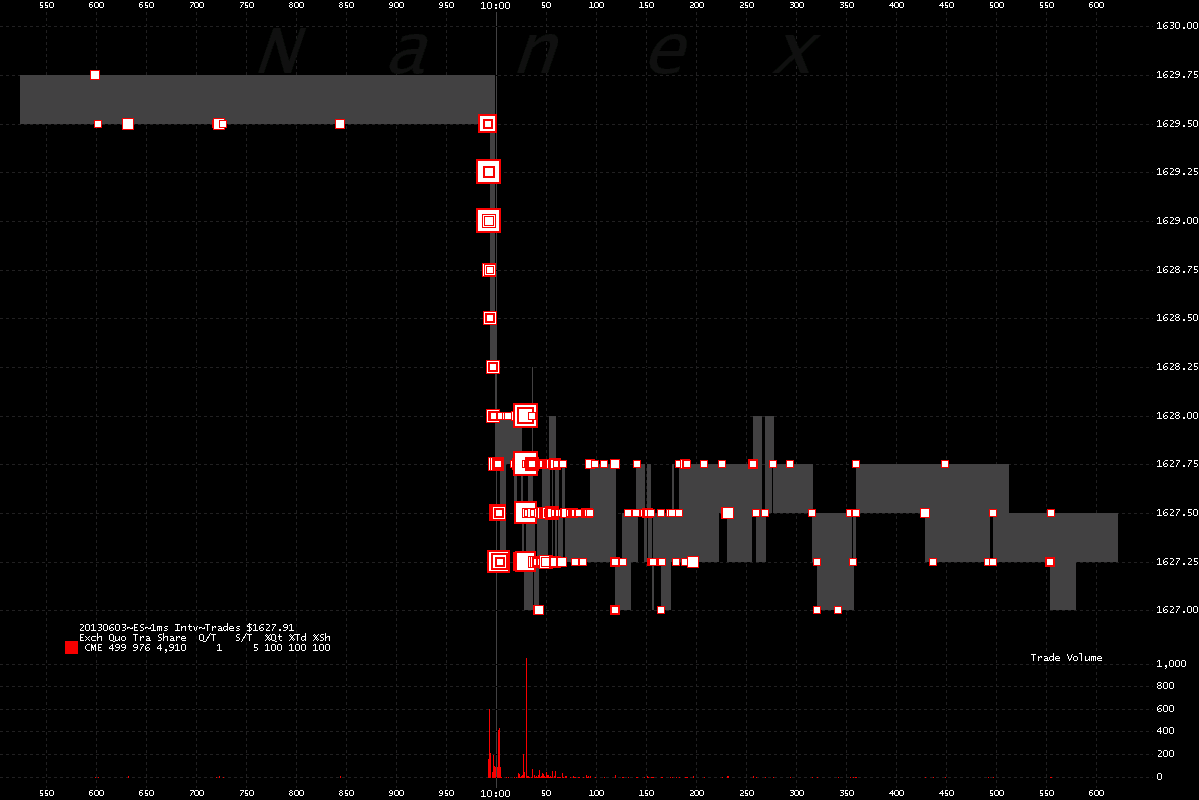
5. SPY trades color coded by exchange and NBBO. Zoom-out of Chart 3.
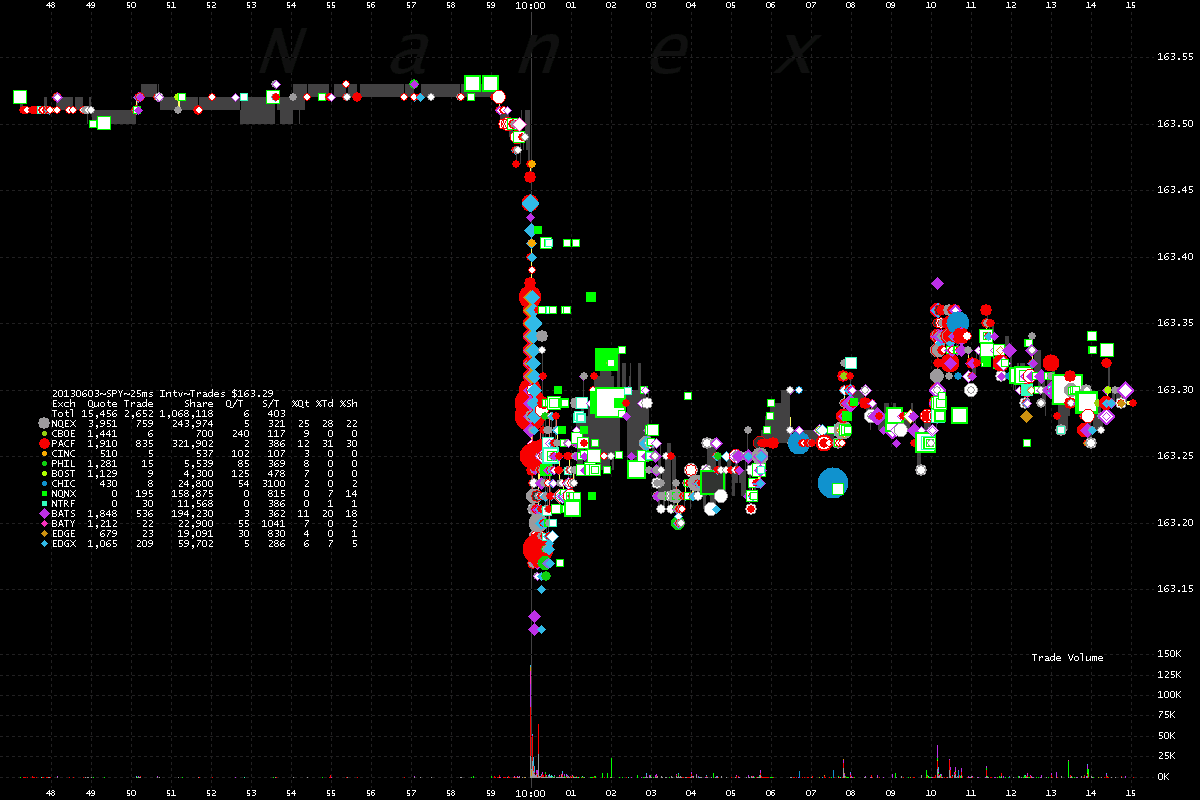
6. ES June 2013 Futures (eMini) trades and quote spread. Zoom-out of Chart 4.
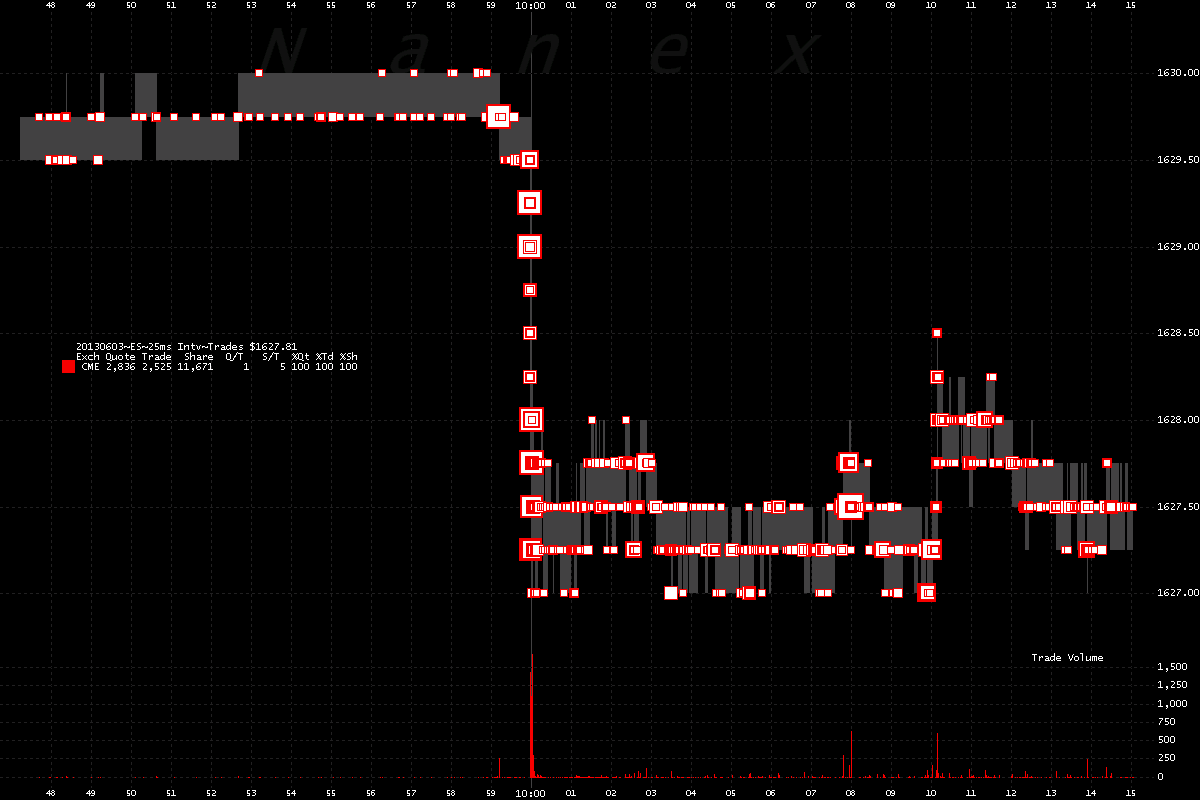
We found another issue during this event. It appears that trades reported from EDGX
may have been sent to the consolidated feed as much as 300 milliseconds after orders.
We compared SPY trade execution timestamps from their GetTrades product with the timestamp found on matching trade reports from the Consolidated (CTA). The table showing these trades and timestamp difference appears below (download
the pdf). Note that EDGX trades appear as blue
diamonds in Chart 1.
Note: Direct Edge called us and strongly denied this is happening, though
the data indicates otherwise.
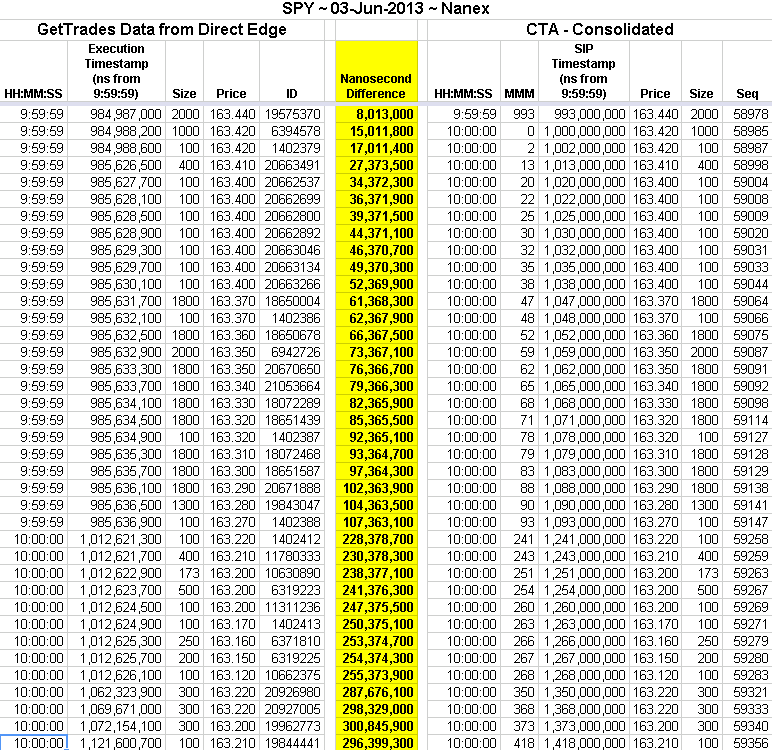
7. Comparing EDGX Trades from Consolidated (blue) and GetTrades (red, direct
feed).
Note how the blue dots/lines are simply offset to the right of the red dots - this indicates
the magnitude of the delay to the consolidated. Several points have been measured and
labelled.
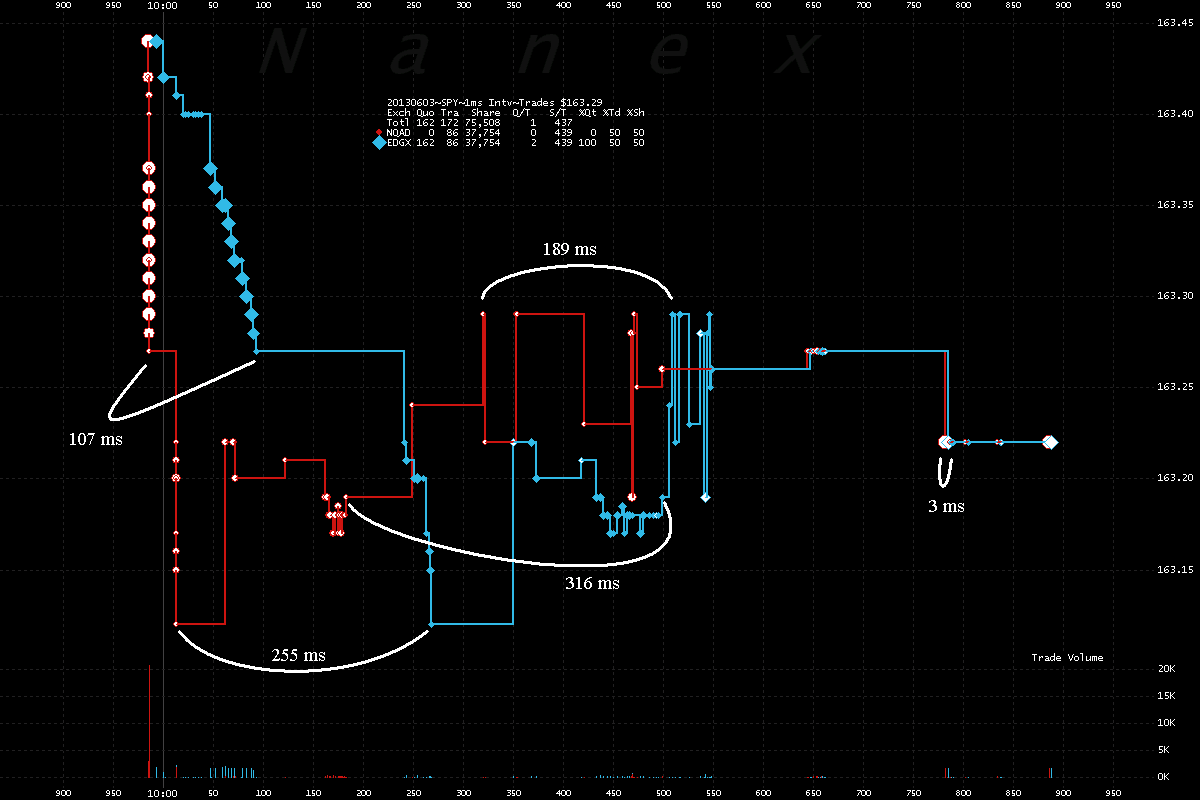
8. EDGX Trades from GetTrades (D) and Consolidated (C), plus bids from Consolidated
(triangles).
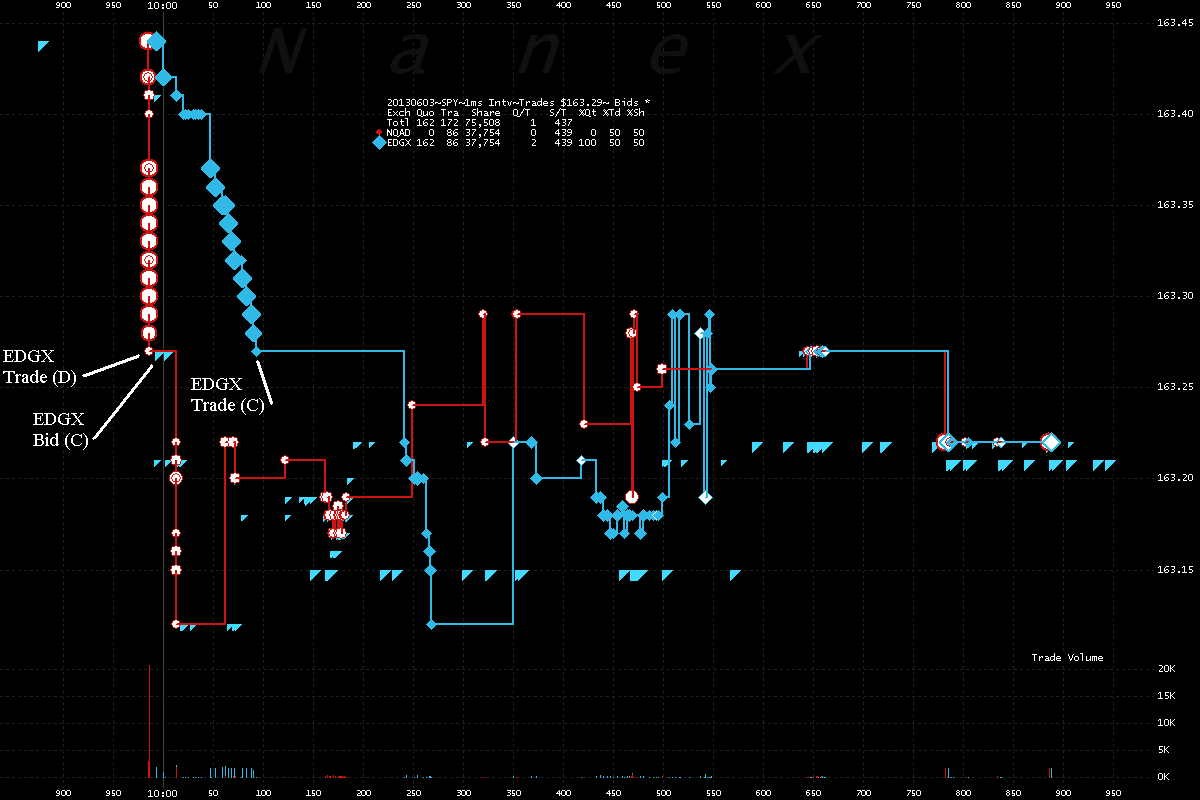
9. Zoom of Chart 8.
Note how some of the trades from GetTrades are timestamped earlier than bids from the
consolidated!
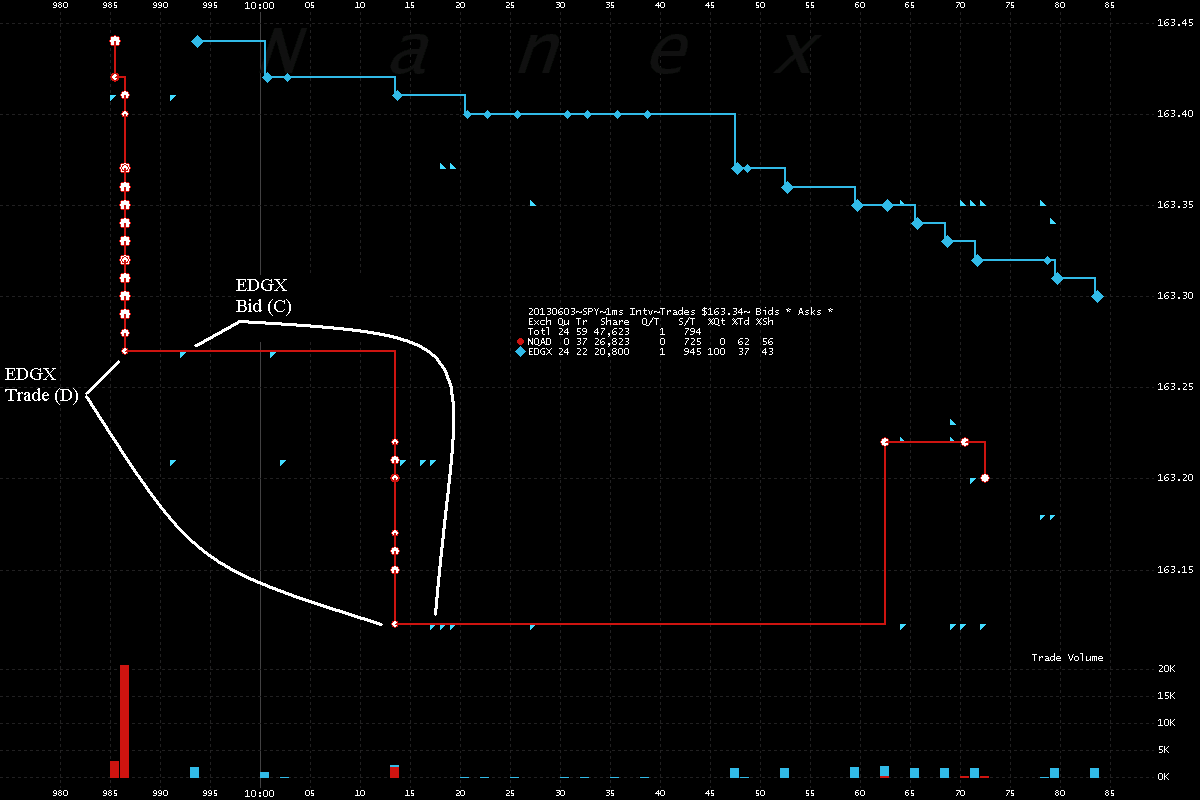
Nanex Research
Inquiries: pr@nanex.net










